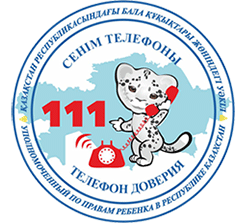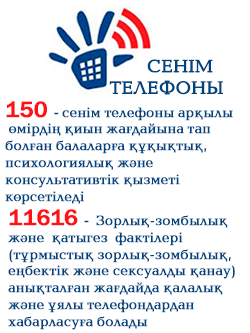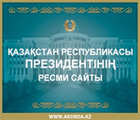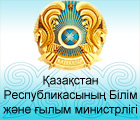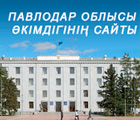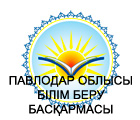«ҚР-да ЭКОНОМИКА ҚҰҚЫҚ ЖӘНЕ БІЛІМ БЕРУДІ МОДЕРНИЗАЦИЯЛАУДЫҢ ӨЗЕКТІ МӘСЕЛЕЛЕРІ»
YI-ші ОБЛЫСТЫҚ КОЛЛЕДЖАРАЛЫҚ ҒЫЛЫМИ-ТӘЖІРИБЕЛІК КОНФЕРЕНЦИЯ МАТЕРИАЛДАРЫ
Өткізілетін орын: Павлодар көпмамандықты инновациялық колледжі (23.02.2013ж).
Тақырыбы: «Ағылшын тілі грамматикасының қызықты әлемі»
СМС-12-9-1 тобының оқушысы Қасенова А.
Ғылыми жетекші: А.С. Хамитова ағылшын тілі пәнінің оқытушысы.
Грамматика – дегеніміз жүйе. Ағылшын грамматикасының меңгеруге жүгірмей тілді меңгеру тек өз ортасынан бөлініп, ағылшын тілді ортаға түскен адамның қолынан келеді.
Грамматикаға «тереңдей ену» арқылы біз өз білімімізді жүйелендіреміз. Ағылшын грамматикасының ережесін меңгеру қажет. Меңгерілген қағида дағдыға еніп, оны қолдану бірте бірте автоматты жүйеге айналады. Меңгерілген грамматикалық үлгілер шаблон ретінде әрекет етіп, ол бойынша барлықбарлық жаңа және жаңа формаларды толық қарастыруға мүмкіндік береді.
Ағылшын грамматикасын меңгеру осындай шаблондарды дайындаудан тұрады, сондықтан басты мәселе барынша сенісді үлгілерді меңгеру болып табылады.
Ағылшын тілінің грамматикасы – қарапайым математикамен шамалас деуге болады. Екеуінің де ортақ ұқсастығы математикада да, грамматикада да жаттап алуға және оны қолдануға қажетті формуласы бар. Ағылшын тілінің тағы бір қарапайымдылығы – ол оның анағұрлым орыс тілінің грамматиккасынан жеңілдігінде. Мысалы ағылшын тілінде анықтауыштардың жоқтығы.
Ағылшын грамматиксын меңгерудің сегіз негізгі ережесі бар.
1.Грамматика негіздерінің берік білімі көптеген қосалқы беткі анықтамалармен танысқаннан гөрі мейлінше маңызды.
2.Ағылшын грамматикасынан нақтылы логиканы іздеудің қажеті жоқ, өйткені кез келген тілде көптеген нақтыланбаған даму тарихы бар. Сондықтан ережені меңгере отырып, біруақытта оның ерекшелілігін де меңгерген жөн.
3.Грамматикалық ережені қолданылатын сөйлемдерді оқу арқылы есте сақтау қажет. Ол ережені оқығаннан гөрі жеңілірек.
4.Грамматиканы меңгеру барысында ана тілінің ережелеріне сәйкес ағылшын тілінің ережелерін сәйкестендіру керек. Бұл ағылшын тілінің ассоциативті байланыстарын бастапқы анықтауға және құруға мүмкіндік береді.
5.Бәрінен бұрын ағылшын бастауыштарын, анықтауыштары мен толықтауыштарын, ағылшын тіліндегі сөйлемдер мен оның тәртібін оқуды үйрену керек.
6.Меңгеретін ереженің кестесін құрастыру керек, оны құра отырып көрнекілікті меңгеруге, грамматиканы осы кесте бойынша қайталауға болады.
7.Өздік түрде грамматиканың ережелеріне сұрақтар құрастырып, оған өз сөзіңмен жауап беру қажет.
8.Үлгілік модельді құру – бірнеше бір үлгідегі ағылшын тіліндегі ережелерді, сөйлемдерді қоса отырып, олардың өзара салыстыру қажет.
Грамматикалық дағдылар барлық сөйлемдердің, оларды қалыптастырудың, жетілдірудің, ажырамас бөлігі болып табылады және оларды дамыту шет тілін оқудың негізгі мәселесі болып табылады. Біздің таңдаған тақырыбымыз маңызды болып табылады, өйткені оқушыларды үйреншікті грамматикалық жаттығуларды орындауға қызығушылықтарын арттыру қиындықтар туғызады, олар одан тез шаршап қателіктерге бой алдырады.
Ағылшын тілі сабақтарында әр түрлі әдіс-тәсілдерді пайдалану қажет, ол грамматикалық механизмдердің икемділігін қалыптастыруды қамтамасыз етеді. Біздің шет тілі сабақтарында келесі технологиялар мен әдістер қолданылады:
- ақпараттық;
- әртүрлі деңгейлік оқыту технологиялары (үлестірмелі материалдар: карточкалар, сызбалар, кестелер);
- жаңа материалдарды меңгеру бойынша өздік жұмыстардың әдістері мен тәсілдері;
- командада оқыту, зерттеу жұмыстарын іске асыру.
Оқушылардың шығармашылық идеяларын іске асыруға мүмкіндік беретін әдістердің бірі мнемотехникалар әдістерін пайдалану болып табылады. Олар ерекше ойлауды, жаңа тапсырмаларды шешуді анықтайды.
Мнемотехника - әдісі, тиімді түрде біркелкі қайталаусыз сөздерді, сөз таптарын, шет тілінің грамматикалық құрылымдарын қызығушылықпен есте сақтауға мүмкіндік береді.
Мнемотехника тәсілдерінің кейбіреуін мысалға келтіремін:
1.Карточкаға сөздер мен сөйлемдерді жазып, оны өзіңді қоршаған заттарға бекітіп қой.
2. Рифмовкалар – логикалық жалғасы бар таныс емес байланыстармен таныс сөздерді ырғаққа енгіз.
Оқытудың ойын әдістерін қолдану көптеген қызықсыз грамматикалық материалдармен жұмыс істеуден алшақ болуға және қызықсыз жұмысты танымды етеді. Жаттығуларды механикалық түрде іске қосуды ойын жағдайлары ығыстырып, жадыны, ойлау қабілетін іске қосады.
Оқу сабақтарын жұп, топ түрінде ұйымдстыру қарымқатынас аясын құруға мүмкіндік береді әрі оқушылардың тілдік материалдарды меңгеруге қызығушылықтарын арттырады.
Егер тіл – қарым-қатынас құралы болса, қарым-қатынас – өзге адамдармен пікір алмасу болып табылады, сондықтан өз ойың мен идеяларыңды нақтылай дұрыс көрсете алу қажет. Ендігі кезекте грамматика дегеніміз не?, ол бізге не береді? деген сұрақтарды талдау керек.
- Бәрінен бұрын оқылатын мәтінді дұрыс құрастыра білу.
- Шет тілінің грамматикалық құрылымдарының ерекшеліктерін білу ана тілі мен меңгерілетін тілдің арасындағы айырмашылықтарын көруге мүмкіндік береді.
Шет тілін меңгерудің бірнеше қағидалары бар.
1. Синтез Талдау Синтез
Бастапқы грамматикалық құрылымдар сөйлем түрінде енгізіледі. Содан соң грамматикалық ақпаратты жалпылаудан тұрады, одан соң екінші синтезді іске асыру, атап айтқанда оқушылар коммуникация үрдісінде грамматикалық құбылыстар туралы білімді саналы түрде қолданады.
2. Суггесивтік қағидалар.
Ол әсерлі көтерілу мен күш салуды шешу жағдайларында грамманиканы оқытудан тұрады. Оқу оқушылардың оқытушымен және бір-бірімен қарым-қатынасы барысында қуаныш сезімге бөленуіне сай құрылады, оқытушы олардың табысқа жетуге деген сенімділігіне қолдау көрсетеді.
Грамматиканы табысты түрде меңгеру полисенсорлық ортаның: дыбыстық, графикалық, вербальдық және вербальдық емес құралдарды, музыканы, түсті құрылуын қамтамасыз етеді. Полисенсорлық орта тек қана әр түрлі каналдар арқылы ақпараттарды қабылдауды қамтамасыз етіп қана қоймайды, ол сонымен қатар оқушылардың грамматикалық білімдерді, дағдылар мен іскерліктерді әр түрлі үлгідегі инттелектермен табысты түрде меңгеруге жағдай жасайды.
Кіріспе мен жаңа грамматикалық материалдарды бекіту кезінде оқытудың коммуникативтік-бағыттылығына басты назар аударылады. Егер оқушы меңгерілетін құрылымның коммуникативтік қызметін, ойын білетін болса онда олар сөйлемде оны дұрыс қолдана алады. Оған әр түрлі деңгейлік материалдарды: механикалық, дайындалу жаттығуларынан бастап (drills), еркін, тұлғалық-бағыттылық тапсырмаларды ұсынуға болады.
Егер де оқушыдан оларға ағылшын тілі сабақтарында не ұнамайтындығын сұрайтын болсақ - ағылшын тілінің грамматикасы деген жауапты еститін боламыз. Грамматиканы қызықты, өнімді әрі шығармашылық үрдісіне қалай айналдыруға болады? Егер грамматиканың коммуникативтік және қызметтік бағыты болатын болса ия, бұл мүмкін болатын жағдай. Ол үшін сабақтағы біржақты механикалық жаттығулардан аулақ болып, грамматикалық материалдармен жұмыс істеудің әдіс-тәсілдерін пайдалану қажет.
Ағылшын етістігі, дамыған жүйеден тұрады. Ол Indefinite, Perfect, Continuous топтарындағы The Present, the Past, the Future уақыттарынан тұрады. Барлығы 12 жеке форма. Орыс тіліндегі уақытша түрлердің жүйесі аз: барлығы 5 жеке форма.
Ағылшын тіліндегі көрнекті форма тек қана етістікті сипаттап қана қоймайды, сонымен қатар ол кейбір шақтар мен уақыт үзінділері сәйкестігінің аяқталғандығын көрсетеді.
Мысалы: The Present Simple Tense, қарапайым, қазіргі шақта анықталмаған уақыт осы шақтағы әрекетті көрсетеді, бірақ оның осы шақтағы уақытпен байланысы жоқ.
He goes to the plant every day.
He is going to school now.
He has cut the metal.
Грамматикаға оқыту коммуникативтік негізде микрожағдайлар аясындағы негізде іске асырылуы мүмкін, онда коммуникативтік нұсқаулардың осы немесе басқа да шешімдерімен байланысты жинақылық болуы мүмкін.
Схема самостоятельной работы изучения грамматического материала:
Ережені оқы
Мысалдарға талдау жаса
Жалпы заңдылықтарды сәйкестендір және енгіз
Бастау алатын жаттығуларды орында
Әртүрлі деңгейлік тапсырмаларды орында
Аналогия бойынша құрастыр
Сонымен, шет тілін оқытуда грамматика басты орынға ие болады, бұл басқаша айтқанда лексика орнығатын қаңқа ретінде болады. Грамматиканы оқыту және өз ойыңды дұрыс құрастыру, сонымен қатар грамматикалық сөйлемдегі формалады тану грамматикалық дағдыларды қалыптастыру арқылы жүреді.
Грамматика жүйе ретінде маңызды компонент болып табылады, екіншіден кез келген коммуникативтік дағдылар белгілі бір уақытқа дейін реттеушісіз болады, үшіншіден грамматикалық білім тілді меңгеруге қызығушылық танытқан адамдардың қажеттіліктерін қанағатандырады.
Грамматикаға оқыту біздің сабақтарда тілді жылдам әрі тиімді меңгертуде оқу үрдісін ұйымдастыру аясында, жоғары мотивацияны сақтау мен психологиялық кедерлілерді жою жағдайында табысты түрде жүреді. Студенттер суреттелген жағдайларға қатысушы ретінде ат салысуды жақсы көреді. Тұрақты түрде сөйлесу жағдайлары сабаққа жаңашылдық әкеледі, ал жаттығулар сипаттамасы (диалогтық қарым-қатынас, топтық жұмыс) - ұжымдық өзара әрекеттестікті қамтамасыз етеді.
Түйіндеме
Грамматиканы оқыту – шет тілін оқытудың маңызды аспектілерінің бірі, басқаша айтқанда грамматика болмаған жерде толық коммуникация болмайды.
Грамматика сөздік іс-әрекеттердің барлық түрлерінің ажырамас бөлігі болып табылады. Бұл шет тілдерді оқытуды қалыптастырудың, жетілдірудің және дамытудың негізгі тапсырмасы болады.
Грамматика жүйе ретінде маңызды тілдік құрылым болып табылады, екіншіден грамматикаға тұрақсыз қатынаста болатын кез келген коммуникативтік дағдылар белгілі бір аралыққа дейін болуы мүмкін, үшіншіден грамматиканы білу тілді меңгеруге талпынған адамдардың қажеттіліктерін қанағаттандырады.
Қалыптасқан грамматикалық механизмдердің тиімділігі мен икемділігі әр түрлі тәсілдерді, әдістерді пайдалануды қамтамасыз етеді.
Әдебиет:
1. Журнал «Иностранные языки в школе».- 1992г.-№5-6.
2. Интернет ресурс.
3. Обучение иностранным языкам. Бим И.Л. Иностранные языки в школе.-1989.-№1.
4. Зимняя И.А. Психология обучения иностранному языку в школе. М.: Просвещение, 1991 г. ).
5. Еремина О.П., Ижогина Т.И. Книга для учителей английского языка.
УДК 372.881.111.1
Elements of the communicative method of teaching English
Начало формы
Khamitova A.S., Machine-building college, Pavlodar.
In the Republic of Kazakhstan, which is a multinational state, the actual problem is the formation of multicultural personality, speaking two or more languages.
In the message 2007 "New Kazakhstan in a New World" the President Nursultan Nazarbayev said: "Kazakhstan should be seen around the world as a highly educated country, with a population speaking three languages. They are: Kazakh – the official language, Russian - the language of international communication and English - the language of successful integration into the global economy ", -" Russian language is important for us as the language which helped us to come into a world culture. (…) English language in which innovations are made, the new technologies that are essential to global peace, it is very necessary "- continued the idea the President of Kazakhstan.
With the adoption of the Law "On languages" foreign language acquired the status of a means of international communication. The special interest among young people to the English language as a means of international communication rises every year. New specialities with skills of foreign languages are appearing.
Knowledge of English language is a mandatory requirement for business contacts and doing business in any point of the world, the certificate and the guarantee of competitiveness, professional socialization of today's younger generation.
The task of the teacher is to improve teaching methods, review the content of teaching a foreign language. It is necessary to search for innovative methods, progressive technologies of teaching languages.
Fundamental changes in educaton take place when the content and methods of teaching are radically revised. In this context, the problem of creating (using) of the effective methods of teaching English is extremely important. As a teacher of English - a subject which is a priority, every English teacher realizes greater responsibility for student’ achievement.
The constantly increasing demands of society and time to the level of English proficiency raise the question of a reasonable and informed choice of a particular method depending on the specific learning situation, aims and stages of teaching English.
According to academic research, linguists have demonstrated that there is not one single best method for everyone in all contexts, and that no one teaching method is inherently superior to the others.
Also, it is not always possible - or appropriate - to apply the same methodology to all learners, who have different objectives, environments and learning needs. Each teaching method is based on a particular vision of understanding the language or the learning process, often using specific techniques and materials used in a set sequence.
For the students of non-linguistic specialities the subject "Foreign language" is not a basic subject and therefore, in order to make the learning more effective and goal-directed, the teacher should clearly imagine the role and the place of language in the life of future professional.
For the students of technical specialities as the scope of the use of foreign language is: reading (Literature on the speciality); intercource (usually formal, business, and daily under certain conditions,), educational and research work, though the particularities of the use of a foreign language in each case are stipulated in the content of the student’s activities, on the specialist, specific features of the college.
The urgent task is the task of learning foreign language as a means of communication, the decision of which assumes the existence of the complex of belonging to another language, verbal and communication skills, which is the basis of belonging to another language cognitive potential.
In this connection, the principle of communicative of professional and belonging to another language knowledge in learningof a foreign language acquires a special importance. Possession of foreign language as a means of communication requires the ability to be orientated towards the certain situation, to find the most effective ways and means of solving of arising problems, to predict the results of their training and communication activities.
Choosing a method of education at the present stage of development of English language it is necessary to base on the peculiarities, characteristics of the group to take into account students' personal characteristics, their age, interests, level of training, the period during which the training will take place, as well as the technical equipment of the institution.
I have taken the communicative approach of teaching English as a basis in my teaching activity which is directed to the practice of communication.
The communicative approach is an implementation of such method of learning where systematic, ordered teaching of English as a means of communication in the conditions of reproducing speech activities is carried out in the classroom.
To provide a more intense and focused period to the creation of adaptive learning system it is appropriate to meet the basic ideas laid down in the tried and received the recognition of progressive pedagogical technologies.
Such pedagogical innovations as technologies "full of learning," "tiered training", "collective mutual learning" and others allow to adapt the learning to different level of difficulty of the content of the learning.
Technology of full learning
The authors of the technology of full learning are American psychologists D.Karrole, B.Bloom. Authors of the technology took the supposition that the ability of exercise is determined not on averaging but on optimally similar conditions for the students, helping all students to grasp the source material fully:
1. Active involvement of the student in search of educational and cognitive activity, organized on the basis of intrinsic motivation;
2. Organization of joint activities and partnerships of training students and teachers.
3. Providing of dialogic communication.
The task of the teacher is to determine what the complete assimilation is and what the results are to be achieved by all, the precise definition of criteria for the complete assimilation of the course is a major factor of the work in the system.
The technology of collective mutual learning
The technology of collective mutual learning is related to the popular student – oriented learning technologies. This technique has various names: "organizational dialogue", "associative dialogue," "collective mutual learning," "collective ways of learning," "student work in pairs."
Pair work of interchangeable compound makes it possible according to certain rules to develop student’s independence and communication skills.
Pair work can be used in three ways in the classroom:Statistical pair: it teaches two pupils at will, changing roles of "teacher" - "student", this is the way of learning two weak students, two strong studentst, one weak and one strong student in terms of mutual position;
Dynamic pair: four students are chosen and prepare one task, but consisting of four parts, after the preparation of his part of the task and self-controlling the student discusses the task three times with each partner, and each time it is necessary to change the logic of presentation, accents, tempo, etc. that is to include a mechanism of adaptation to the individual pecularities of the comrades;
Variation couple where each member of the group receives the task, do it, analyzes together with the teacher, makes the mutual learning scheme with the other three comrades, at the end each of them knows four parts of the learning content.
Teamwork, cooperation of students are always encouraged. During the lesson, the conditions to work in pairs or in groups are created, it promotes to increase the length of each student's speech than in situation where students speak only with the teacher. Working in groups helps to speak English in an informal situation and increases the motivation of students, giving them the opportunity to share the ideas and help to each other.Students are responsible for the results learning and develop their ability to learn. Exept the use of knowledge in practice, students learn to make their own decisions, and not just absorb ready-made answers: such tasks are performed during the introduction and generalization of grammatical and lexical material.
The technology of module training
The essence of module training is that the student reaches a particular purpose of learning in the working process with the module completely himself and sometimes with a certain dose of help.
Module - is an objective functional unit where educational content and technology of mastering of the content are combined.
The content of training is given in completed separate complexes (data blocks), where the understanding is carried in accordance with the purpose. The didactic purpose is formulated for the student and includes not only the instructions but also the level of its understanding. The modules make them possible to change the learning into subject - a subjective basis, to individualize the work of some students, dispense individual assistance, to change the form of communication between teacher and student.
The teacher's role is different depending on the goals of each stage of the lesson. Each teacher has own teaching style, however, depending on the type of work being done at the moment in the classroom, the teacher must act flexibly: to lead and support students, but not always to dominate.
The teacher acts in different roles at different lessons. He can be an exponent of information when a student needs the original infopmation, the observer, when students work in pairs or groups independently, the teacher walks around the class, helping students, a consultant, when students ask for an advice. I is necessary to have certain conditions for the realization of the principles of communicative teaching.
The first condition of communication in the classroom is the trustful relationship, mutual sympathy between teachers and students, a favorable psychological climate and atmosphere of cooperation. The second condition is the teacher's ability to implement a subject-subject relations with students in class and outside of it, through the organization of the group, paired and individual work of students, through the planning of an increasing number of situations of communication and promotion efforts of students to take part in them. The third condition is teaching complex, helping to implement communication-oriented teaching.
Communicative-oriented learning of grammar and vocabulary.
Learning of new grammatical phenomena begins with communicative exercises which help the student to explain the main purpose of the material.
After the introduction of new material it is necessary to consolidate it, students must understand new structures, remember them and reproduce them right.
There are different ways of working with the material. Mechanical, training exercises (drills) help to work out the structure, to learn quickly.
The use of mini-dialogues having personally oriented questions is one of the most effective ways to achieve the ability of students to use grammar structures in speech.
In order to systematize the grammatical material, I think that it is productive to use supporting schemes and tables. They help to remember grammatical phenomena better. Students write down the table into a special grammar workbook. Thus, they create grammar books on the studied subjects and they can use them any moment they like.
Introduction of new vocabulary is in one speech situation. First, students learn graphic and phonetic way of words on their meaning and use. When introducing new vocabulary I use techniques such as contextual guess using illustrations in the book, the similarities in spelling and sound of the Russian language, knowledge in other subjects, own assumptions, the demonstration of real objects, pictures on the board, facial expressions, gestures and expressions of face, body language, translation. In order to memorize the words students have special pages titled "Vocabulary" in notebooks, where the word is written on the topics or speech situations.
One of the most effective methods to remember the vocabulary is "word storm": students are divided into teams, and write down the words from memory on the blackboard during the given time. Then the words are pronounced, corrected spelling mistakes, counted the number of correctly spelled words, the team winner is revealed. These dictations develop memory, fast writing abilities, spelling skills.
Methods of teaching of speaking in the communicative approach
The task of the teacher is to create conditions to facilitate communication of students. The teacher must take into account the specific characteristics of this type of speech activity to do this, such as: motivation, purpose, activity, relationship with the person, tempo. If you have goals and motives of communication, the characteristics of participants in the communication are taken into account, their age, level of development, etc., the act of communication in the framework of speech situation will take place.
The best methods of updating of oral speech are the techniques of interaction between man and man, that is, interactive techniques. These techniques assume the interaction of educational process at the level of "equal to equal", where teacher and student is a part of the same team, they try to achieve the same goal.
Interactive techniques contribute to the organization of a comfortable learning conditions when all students interact actively with each other. Their use involves the simulation of life situations, role-playing games, the general solution of questions based on the analysis of the circumstances and situation.
Interactive methods of intensification of the oral-speech statements in doing creative tasks.
Communicative method of teaching English includes interactive role plays and open discussions and presentations. Their use is a very successful way of student’s activation to encourage them to oral speech.
All techniques listed above promote interaction among participants in the educational process. During the use of these techniques in the classroom teacher is equal among equals: he can ask questions, offer answers, speculate, express the opinion.
Recognizing the existence of different methods in modern learning English, it should be noted that the leadership position has the communicative method. The topicality of this method is dictated by the fact that the main goal of teaching English is to develop communicative competence, and implementation of educational, developmental goals are in the process of implementation of the main goal. Communicative competence, including a speech competence, social competence, educational and cognitive competence, provides for the formation of abilities for intercultural interaction.
In my pedagogical activity I try not only to teach English language skills, but also to create a humane, well-rounded developed student.
Taking the communicative method as the basis, I also use other different methods of teaching as traditional lessons and conversation lessons, competitions, I always try to raise the interest to the subject through the lessons. Such lessons help to expand the horizons of students, the development of language skills, expand vocabulary.


������� ������ ��� dle ������� ��������� ������

